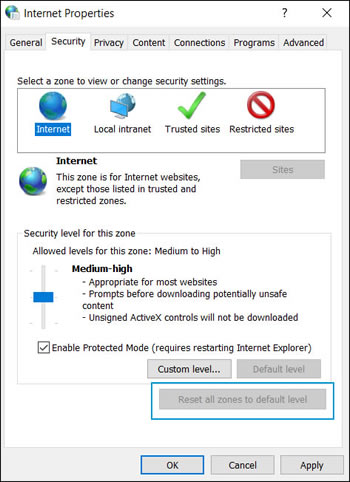- Internet Speed Test Starts High Then Drops
- At&t Internet High Speed Test
- High Speed Internet
- Internet Speed Starts High Then Drops Blood Pressure
- What Speed Is High Speed Internet
Jake Clarke asked why his Internet connection completely drops out every so often. I can't diagnose this problem from a distance, but I can suggest a few tests that will help you help yourself. 10 Surprising reasons your home WiFi lags or drops Posted on October 17, 2017 December 18, 2017 In today’s world, the reliability of your home WiFi network can feel as crucial as running water and electricity. Download starts fast but then slow to a crawl. Whenever I download something, the download will start off well, at a few mb/s and even up to 40+Mb/s, but after about a minute it slows down to less then 1mb/s, and I have to restart Steam hopping servers from other countries. Download starts fast but then slow to a crawl. Whenever I download something, the download will start off well, at a few mb/s and even up to 40+Mb/s, but after about a minute it slows down to less then 1mb/s, and I have to restart Steam hopping servers from other countries.
You're browsing the Web. It's smooth, fast sailing, with pages loading in a snap. Then you start a download -- and what was formerly a fast Internet connection turns into a slower-than-dialup experience. What happened?
Why Web browsing slows down when downloading files
Believe it or not, this is common. If you're like me, you have a fast fiber, DSL or cable modem hookup to the Internet, directly hooked to your computer. You're probably using file sharing applications all the time, as well. This causes terrible Web browsing -- and you can easily figure that out, because as soon as you stop any file sharing applications, Web browsing speed returns back to normal.
The slowdown is caused by the queues at your ISP (or your modem). The ISP limits your Internet speed either at the modem, or at the router assigned to your modem. Since information can't come in as fast as possible, long queues of pending information build up in your router/modem.
The effect? After you click on a link in your Web browser, quite a lot of information (usually, your download) needs to be dispatched before you get to see the new Web page.
The solution: rate-limiting (odd, isn't it?)
Internet Speed Test Starts High Then Drops
Counterintuitive as it may sound, the solution to the queues is to limit the rate at which information reaches your computer, directly on your computer. By using a clever combination of bandwidth limiting and priorization of outbound packages, you can have almost-normal Web browsing speeds, combined with fast downloads.
In other words:
- Anything your computer sends to the Internet will be given priorities, and important information will jump the queue. Sends of acknowledgements and interactive traffic (remote desktops, shells) will get priority.
- If any computer attempts to send data to your computer too quickly, your computer will tell it to slow down. This will avoid the buildup in the queue at your ISP.
Basically, you'll be executing a tradeoff: decreasing latency at the expense of a bit (5% to 10%) of bandwidth, but the cost is certainly worth it.
Now, you may balk because this technique requires you to actually scale back (a bit) your connection speed. Do not -- if you follow through, your effective download speed will go up, because TCP acknowledgements arrive to their destination faster. If you're using BitTorrent (which requires uploading), you'll see a stable, maxed-out, download speed, instead of seeing dips in download speed when uploading.
As usual, the solution is a clever script that does everything for you, instead of you having to do it manually.
The script that solves the speed problem
Further below, you'll find instructions on how to use it.

This is a heavily tuned version of the Wonder Shaper script that roams the Linux advanced routing and traffic control Web site.
Keep reading to find out how to install and use this script on your computer.
How to use the script
To use this script, you need to:
Install it to your computer
Copy the contents to your clipboard, then save it to a file named
rc.wshaperin your/etcdirectory. You may need to do this task as the root user, because the/etcdirectory is off-limits for unprivileged users.Configure it. It's easy to set up.
- The line that starts with
DOWNLINK=should be followed by your download bandwidth in kilobits per second, minus 5% to 10%. For example: if you have a 1000 Kbps link, you should set it between900and950. - The line that starts with
UPLINK=should be followed by your upload speed minus 5% to 10%. - The line that starts with
DEV=should contain the name of your network interface (typicallyeth0-- check your computer's network configuration). Optional: set low- and high-priority ports.
The lines that start with
NOPRIOPORTSRC=andHIPRIOPORTSRC=can contain a quoted list of low- and high-priority ports (whose traffic will take a back seat in the face of regular traffic). The script already ships configured with ports for VNC (as high-priority), BitTorrent, Direct Connect and Gnutella.
- The line that starts with
Set it to run during startup.
In the file named
/etc/rc.localon your computer, add a line that calls this script:Take note: in some Linux variants, the file is named
/etc/rc.d/rc.local.Reboot. Or run the command directly, if you know how to.
How do I know if it's doing anything?
Simple. You call it (with administrative privileges) using the status argument on your favorite terminal program:
As you can deduce from the output of the script, there are four classes:
- 1:10: acknowledgements and interactive traffic (type of service
Minimize-Delay) go here - 1:20: high-priority traffic get classified there
- 1:20: normal traffic goes here
- 1:30: low-priority traffic and bulk traffic (type of service
Maximize-Throughput) goes here, and gets trumped by the first two classes
Lower classes trump higher classes.
You can see how many bytes have been sent in each class, and the speed (rate) at which each class is operating.
At&t Internet High Speed Test

How good is it?

Very good.
High Speed Internet
Obviously, if you're downloading twenty files simultaneously (which is the case with BitTorrent download managers), it won't give you a huge speedup, but you'll notice quite the difference in Web browsing speeds.
Perhaps the biggest speedup will be felt when using remote control applications, such as SSH or VNC.
Flaws in the script?
Internet Speed Starts High Then Drops Blood Pressure
Yeah :-(. There's no easy way to classify and give priorities to incoming traffic, so only outbound traffic (uploads and the like) is prioritized. If you have a solution to this problem, contact me immediately -- I want to send you a case of beer.
What Speed Is High Speed Internet
However, the inbound traffic rate is policed by the script. Thus, no queues build up at your ISP, which means that you'll enjoy faster interactivity (Web browsing comes ti mind ;-))